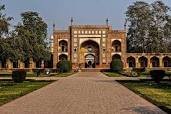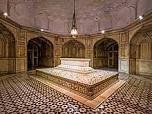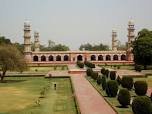The city of Lahore, Pakistan, was an extremely important city for the Mughal Empire. Luckily for us, many of the greatest buildings from that glorious epoch have been preserved in this northeastern city. One great place for any history buff to visit is the Tomb of Jahangir. Built to honour one of the Mughal Empire’s most powerful emperors, the Jahangir Tomb is one of the best-preserved mausoleums from the Mughal Empire in the world.

Before we talk about the structure of this tomb, let’s take a look at the history surrounding Emperor Jahangir. First off, the term Jahangir wasn’t actually the name of this fourth Mughal emperor. His real name was Mirza Nur-ud-din Beig Mohammad Khan Salim. The term “Jahangir” (which literally means “conqueror of the world”) became associated with Emperor Salim because he was such a powerful ruler.
Born in 1569 to Emperor Akbar, Jahangir was extremely ambitious for power. He staged a revolt against his father in 1599 and gained the popular support needed to become the fourth Mughal emperor in 1605. After squashing a rebellion from one of his sons, Jahangir presided over one of the most prosperous epochs in the Mughal Empire’s long history. Not only did Jahangir expand the political reach of the Mughals, he also encouraged the arts & sciences. Jahangir was directly responsible for the growth in Mughal portrait painting and collected exotic animals from around the world at his zoo.

Jahangir was also extremely interested in the wonders of Persian culture. This was especially due to his love for his Persian consort Nur Jahan. We’ll have more to say about Nur Jahan as we explore the construction of Jahangir’s tomb.
Jahangir passed away near Kashmir in 1627. Officials buried the emperor’s entrails in Kashmir and then transported his body to Lahore. Today, visitors can still see Jahangir’s tomb in this incredible mausoleum in the Shahdara Bagh section of Lahore.

Thanks for reading my post.
Specialthanks to
@dodartim
@steemitwarrior